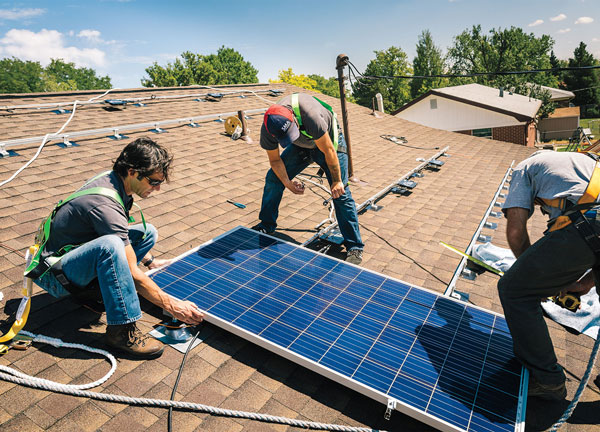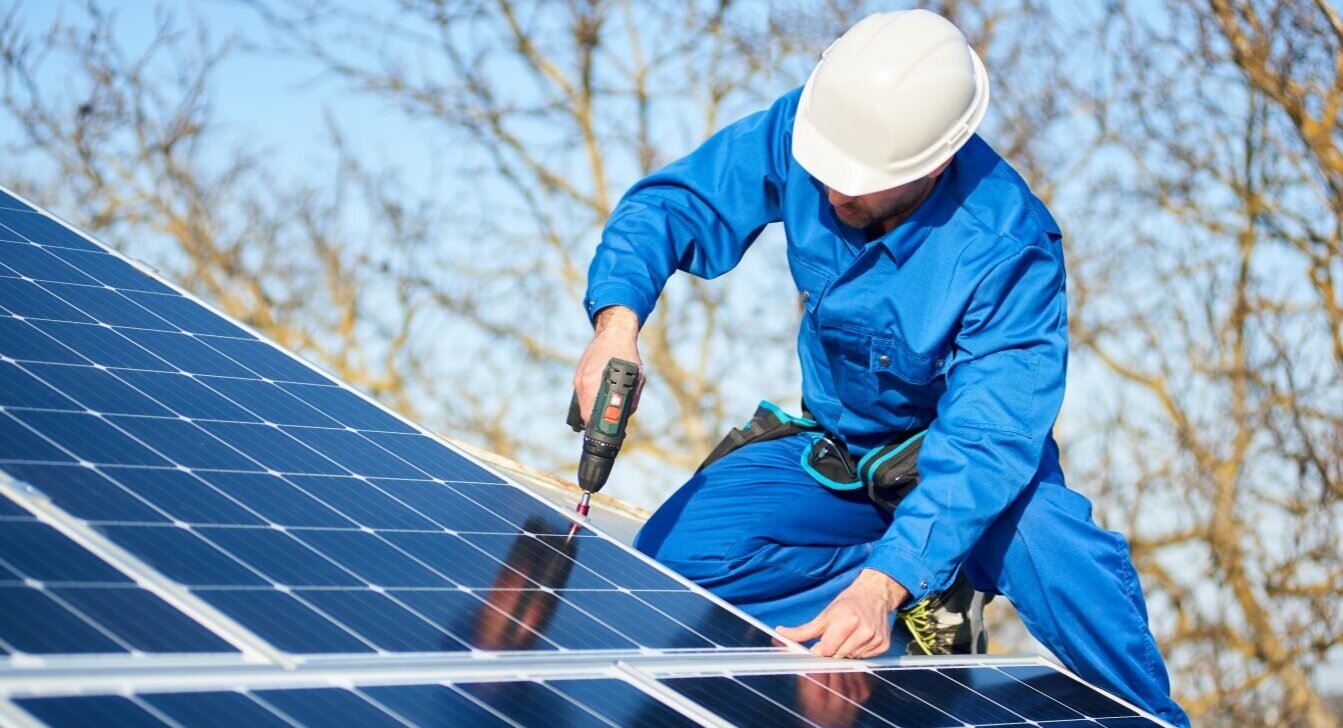Solar System Installation Near Me: Renewable Resource Systems Harness Sunlight To Produce Tidy Electrical Energy For Residences And Organizations
History and Advancement of Solar Panels
Have you ever stopped to wonder how a basic piece of innovation turned sunshine into electrical power? The journey of solar panels is nothing short of a modern-day impressive, woven with minutes of curiosity, innovation, and a dash of serendipity. It was back in 1839 when Edmond Becquerel, a young French physicist, discovered that specific materials produced little electric currents when exposed to light. This discovery planted the seed for what would eventually become the photovoltaic revolution.
Early Milestones in Solar Technology
- 1876: William Grylls Adams and his student Richard Evans Day demonstrated that selenium might create electrical energy from light, a precursor to contemporary solar cells.
- 1954: Bell Laboratories unveiled the first useful silicon solar battery, which converted sunshine to electrical energy at about 6% effectiveness.
- 1960s: Solar panels found a specific niche in powering satellites, showing their worth in area exploration.
Isn't it fascinating how something created for orbit eventually discovered its way to rooftops worldwide? The trajectory of photovoltaic panels from experimental interests to reputable energy sources mirrors the more comprehensive dance of human resourcefulness and environmental awareness.
Secret Advancement That Shaped Solar Panels
| Year | Innovation | Effect |
|---|---|---|
| 1970s | Thin-film solar cells introduced | Reduced product expenses, increased versatility |
| 1980s | Improvements in silicon purity | Boosted efficiency and life-span |
| 2000s | Development of multi-junction cells | Enhanced energy conversion rates significantly |
Show for a minute: how did these incremental enhancements modify the landscape of renewable energy? By continuously pressing limits, solar innovation transformed from a niche development into a worldwide powerhouse. The effectiveness and affordability of photovoltaic panels rose, firing up a wave of adoption that seemed difficult just a few decades before.
Personal Insight: A Sunlit Surprise
I remember going to a small rural town where the setup of photovoltaic panels triggered an extensive change. Kids studied under bright LED lights powered completely by the sun. It struck me-- this technology didn't just transform photons; it converted hope into concrete development. Isn't that the supreme power of solar power?
In the grand tapestry of energy history, photovoltaic panels stand apart as a beacon-- a testament to human resolve and the unrelenting pursuit of cleaner, sustainable futures. From the curious experiments of 19th-century researchers to the smooth, efficient arrays we see today, the story of photovoltaic panels reminds us that often, the brightest ideas begin with a basic ray of light.
Unveiling the Spectrum: Kinds Of Photovoltaic Panel Technologies
Ever questioned why some solar panels shine like glass while others look like dark, matte tiles? The secret lies deep in their innovation. From crystalline silicon to thin movies, photovoltaic panels can be found in a selection of styles, each with its quirks and effectiveness.
Crystalline Silicon Panels: The Workhorse of Solar
Monocrystalline and polycrystalline panels control the landscape. Monocrystalline, made from a single silicon crystal, uses the greatest effectiveness rates-- in some cases surpassing 22%. But this comes at an expense: their production process is energy-intensive. Polycrystalline panels, on the other hand, are made from multiple silicon fragments melted together. They sport a characteristic speckled blue hue and typically fall a little behind in performance, hovering around 15-17%. Yet, they typically cost less in advance.
Think of installing a monocrystalline selection on your roof; the sleek black panels absorb the sun's rays like a sponge. But what if your roofing system's shape or shading isn't perfect? Polycrystalline panels may manage partial shading much better, a subtlety typically neglected.
Thin-Film Solar Panels: Flexibility Meets Development
Thin-film technology departs from the bulky silicon wafers and rather layers photovoltaic material on substrates like glass, plastic, or metal. Cadmium telluride (CdTe) and copper indium gallium selenide (CIGS) are popular thin-film products using lightweight and versatile options.
- Thin-film panels tend to perform much better in low-light or high-temperature environments.
- They're less effective overall-- normally around 10-12%-- however their adaptability can be a game-changer for non-traditional setups.
- Because they're lighter, they're in some cases preferred for rooftops unable to support heavy loads.
Emerging Technologies and the Roadway Ahead

Perovskite solar batteries, often hailed as the next huge leap, have actually stirred enjoyment for their potential to reach efficiencies comparable to silicon panels however at a fraction of the cost. Their longevity remains under examination, similar to a promising novel whose ending is still unwritten.
Have you ever faced the frustration of your solar output dipping unexpectedly? In some cases, the perpetrator isn't dirt or shading however the panel's intrinsic response to temperature fluctuations. For example, crystalline silicon panels tend to lose performance as temperatures skyrocket, often by about 0.5% per degree Celsius above 25 ° C. Specialist Tips for Choosing the Right Innovation
- Examine your environment: Is your place susceptible to high heat or regular cloud cover? Thin-film panels may outperform silicon in these conditions.
- Think about installation restraints: Limited roofing area? Monocrystalline panels load more power per square foot.
- Assess long-lasting toughness: Silicon panels have decades of proven reliability, while new technologies like perovskite are still proving their mettle.
- Element in visual appeals and combination: Some homeowners value the smooth black look of monocrystalline panels, while others prefer the less interfering thin-film alternatives.
| Technology | Typical Performance | Strengths | Factors to consider |
|---|---|---|---|
| Monocrystalline Silicon | 20-22% | High efficiency, smooth look | Higher production energy, cost |
| Polycrystalline Silicon | 15-17% | Lower cost, easier manufacturing | Less effective, blue speckled appearance |
| Thin-Film (CdTe, CIGS) | 10-12% | Lightweight, versatile, good in shade | Lower performance, shorter lifespan |
| Perovskite (Emerging) | 15-20% (laboratory scale) | Possibly low expense, high performance | Stability and durability issues |
Installation: The Unsung Hero of Solar Performance
Envision planting a seed in rocky soil and anticipating a rewarding tree. That's what photovoltaic panel installation seems like when done without accuracy. The angle and orientation of your panels can make or break the energy harvest. Panels angled incorrectly may indulge in sunlight, but they won't transform it effectively.
South-facing roofing systems usually soak up the most sun in the northern hemisphere, but what about roofing systems that face east or west? Tilt adjustments can compensate, but not completely. The difference between 15 degrees and 30 degrees tilt can easily translate into a 10-15% drop in annual output.
Pro pointer: When setting up, prevent shadows cast by chimneys, trees, or even neighboring structures. Simply a small shadow on one cell can reduce the whole panel's output dramatically. Remember, solar batteries are like dominoes; if one falls, the rest follow.
Secret Installation Aspects Affecting Efficiency
- Panel Orientation: South-facing is optimal in lots of regions but think about geographical specifics.
- Tilt Angle: Change seasonally or repair at the average optimal angle for your latitude.
- Shading: Even periodic shadows can trigger out of proportion energy loss.
- Roof Material: Reflective surfaces can increase panel temperatures, reducing efficiency.
- Ventilation: Panels perform best when air circulates beneath, preventing getting too hot.
Efficiency Aspects: Beyond the Surface area
Heat is a sneaky thief. High temperatures deteriorate photovoltaic efficiency. Panels rated at 25 ° C can lose 0.5% performance per degree above that. In scorching summertimes, that theft accumulates, making a shaded however cooler panel surpass a hotter, "perfectly lit" one.
Ever seen how a newly set up variety appears to hum with guarantee however gradually dips in output? Dust and grime do their part, however so does intrinsic degradation. Panels lose about 0.5% to 1% efficiency every year, a subtle decrease that compounds calmly.
Advanced Tips for Making The Most Of Performance
- Microinverters: Use these to ensure that shading or malfunction in one panel does not drag down the whole system.
- Bypass Diodes: They assist maintain output by isolating shaded or damaged cells within a panel.
- Regular Monitoring: Track output daily to catch dips triggered by unforeseen aspects like bird droppings or particles.
- Optimize Wiring: Thicker cables reduce resistance loss, especially in larger systems.

| Element | Influence on Efficiency | Specialist Tip |
|---|---|---|
| Panel Temperature level | 0.5% performance loss per ° C above 25 ° C | Install panels with airflow beneath for cooling |
| Shading | Up to 80% output reduction from partial shading | Trim surrounding foliage routinely |
| Orientation & & Tilt | 10-15% yearly output variation | Adjust tilt seasonally if possible |
| Electrical wiring Resistance | 2-5% energy loss in improperly sized cables | Use appropriately determined cables |
Ecological Effect and Advantages of Solar Panels
Have you ever stopped briefly to consider how the sunlight recorded on your roof transforms into tidy, eco-friendly energy!.?. !? Solar panels imitate silent guardians versus the unrelenting march of carbon emissions, turning photons into power without a whisper of contamination. The ecological footprint of solar technology is terribly lighter compared to fossil fuels, however it's not without its complexities.
One typically ignored element is the life cycle analysis of photovoltaic panels-- from raw material extraction to end-of-life disposal. Mining for silicon and uncommon metals can stir environmental ripples, yet advances in recycling technologies guarantee to close the loop better than ever in the past. Picture a future where photovoltaic panel waste becomes the raw product for the next generation of cells-- circular and sustainable.
Key Environmental Benefits
- Decrease in greenhouse gases: Solar panels produce zero emissions throughout operation, drastically cutting the carbon footprint of electrical power generation.
- Water preservation: Unlike standard power plants, photovoltaic panels need very little water, relieving tension on marine environments.
- Air quality enhancement: By displacing coal and natural gas plants, solar energy minimizes harmful contaminants that contribute to smog and respiratory health problems.
- Land use efficiency: Integration of photovoltaic panels on roofs and city areas lessens interruption to natural habitats.
Unforeseen Insights
Did you know that the energy repayment time for modern-day photovoltaic panels has shrunk dramatically? Early designs required years to balance out the energy bought their manufacture. Today, some panels recover cost in under two years, a testament to leaps in producing efficiency. This means the environmental "expense" is paid back quicker, leaving years of tidy energy ahead.
Determining the environmental trade-offs needs a nuanced eye. The use of harmful chemicals during production demands rigid controls-- overlooked in popular stories however vital to Home Solar Energy Systems sustainable release. What if we utilized bioplastics or natural photovoltaics to soften this effect further? The horizon is broad open for innovation.
Tips for Taking Full Advantage Of Environmental Benefits
- Decide for panels with high-efficiency scores to generate more power per square meter, lowering material use.
- Consider the positioning and angle carefully-- shadowing and dirt build-up can silently wear down ecological gains by lowering output.
- Engage with certified recyclers who focus on solar components to guarantee responsible end-of-life handling.
- Track and enhance your system's performance with smart monitoring tools to catch dips in efficiency early.
| Environmental Factor | Solar Panels | Coal Power Plants |
|---|---|---|
|
CO. 2Emissions. |
Near no operational emissions | High emissions per kWh created |
| Water Use | Very little water utilize | Significant water consumption for cooling |
| Land Effect | Low, particularly on rooftops | High, frequently needing mining and waste disposal |
| Waste Generation | Recyclable components increasing | Toxic byproducts needing disposal |